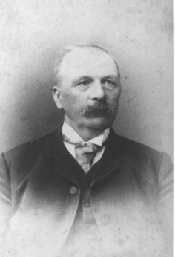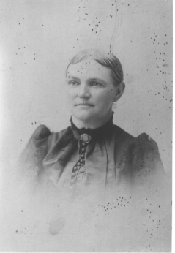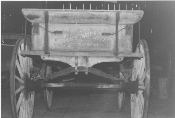The
Trench Carriage
Works
 |
| William
Trench |
 |
| Margaret
(Cook) Trench. |
The
Trench Carriage
Works was
Richmond Hill's
largest industrial establishment and most significant employer during the
1870s.
William
Trench III was born in Dunbar, Scotland, in 1831 and came to
Elgin Mills with his
parents eleven years later. He married
Margaret
Cook of
Langstaff, and
fathered fourteen children, nine of whom grew to maturity. He learned the
blacksmith's trade from his father, and in 1857 set up his own business in
Richmond Hill.
 |
| The
Trench
Carriage Works,Richmond Hill's
largest employer during the 1870s. |
Trench's initial success as a blacksmith paled before his
later prosperity as a carriage maker. In a huge three-storey building (today's
10117, 10119 and 10123
Yonge Street), Trench
employed some fifteen men, manufactured various models of buggies, wagons,
stagecoaches, and carriages, and rang up annual sales of $15,000 to
$20,000.
 |
| Wagon manufactured by the
Trench
Carriage Works. |
Trench was active in community life, serving as reeve of
Richmond Hill from
1875 to 1879 and again in 1881-82. He also owned and operated a farm west of
the village in
Vaughan Township.
A familiar winter sight in the 1870s was his cutter, drawn by a large dog,
pulling some or all of the Trench children between village home and farm
house.
|

